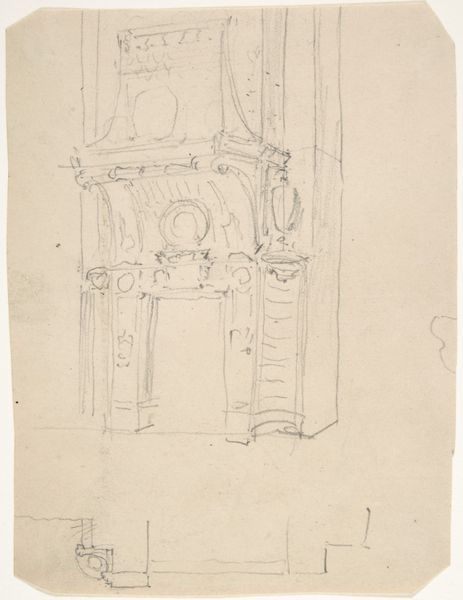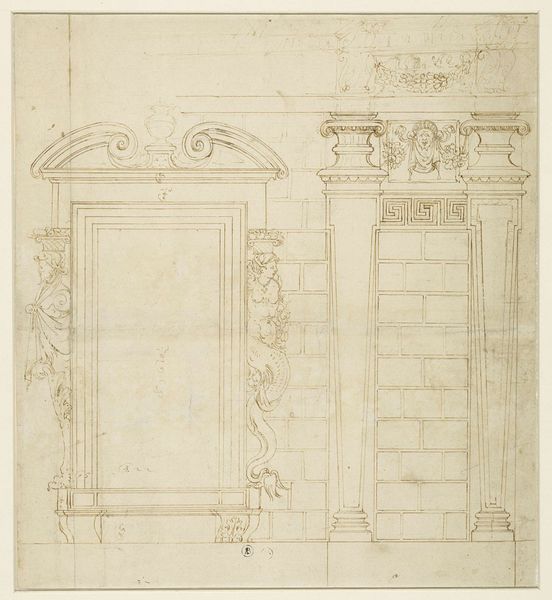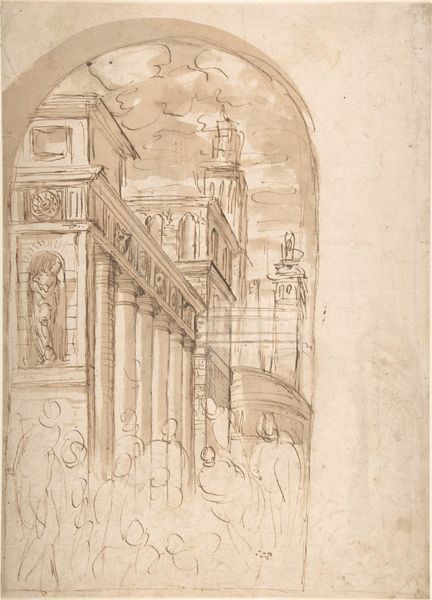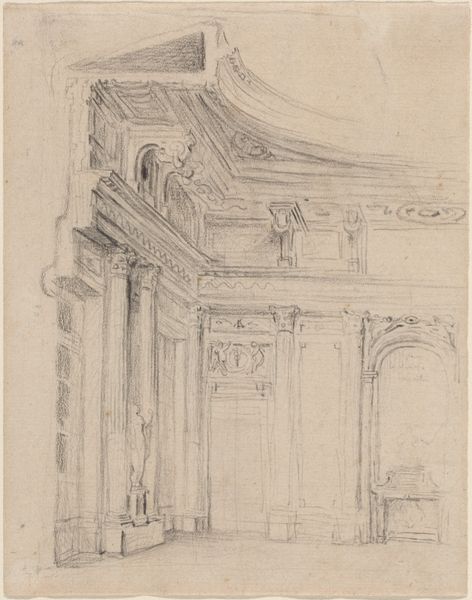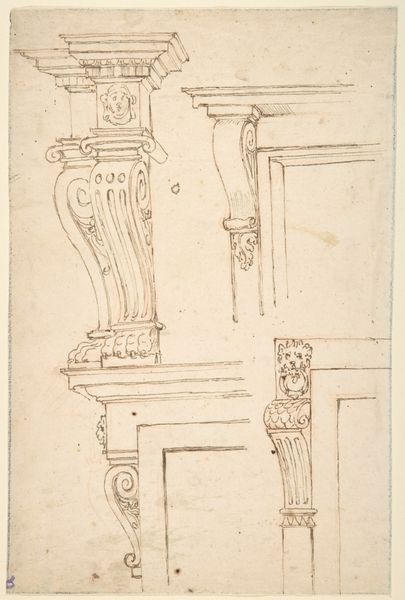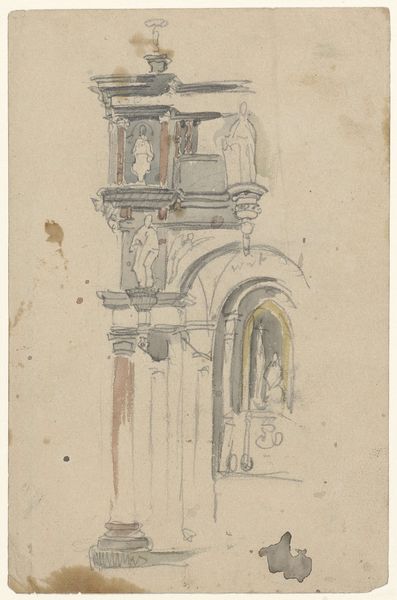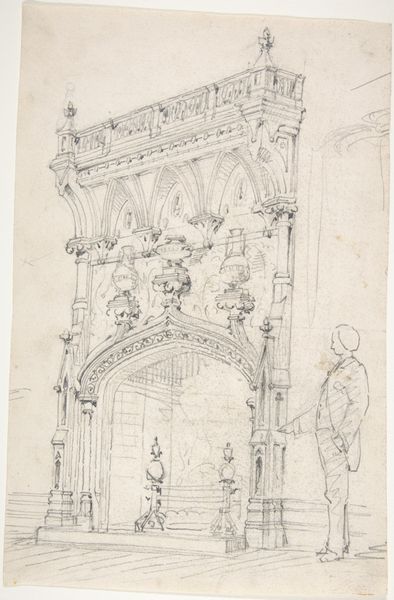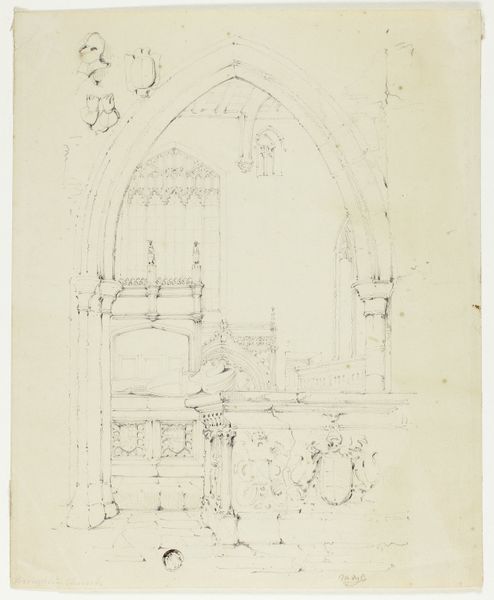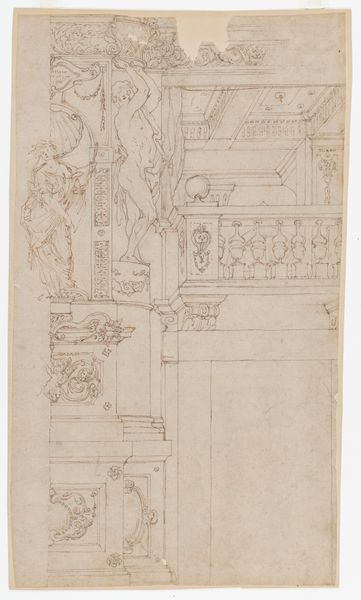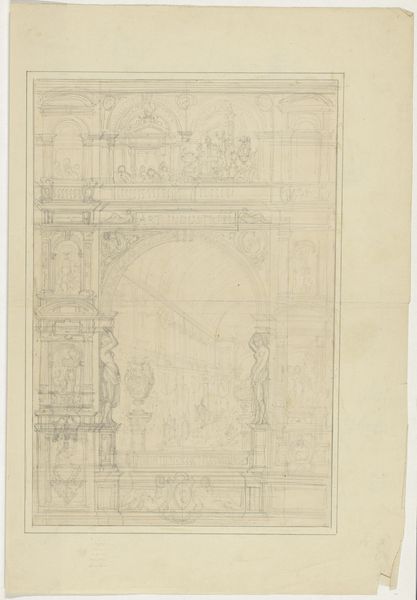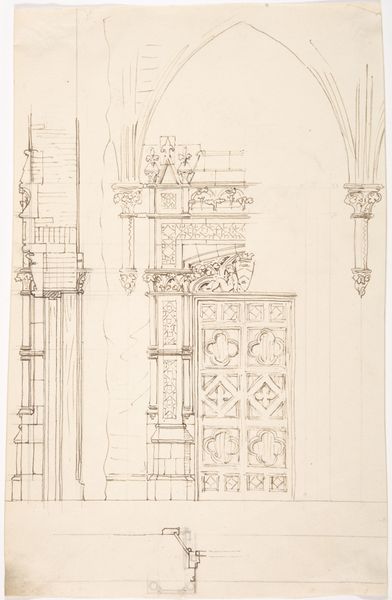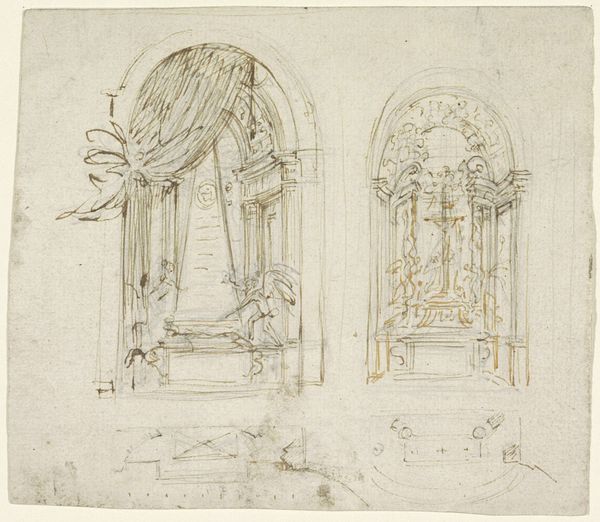
drawing, print, etching, ink, pen, architecture
#
drawing
#
baroque
# print
#
pen sketch
#
etching
#
pencil sketch
#
etching
#
ink
#
line
#
pen
#
history-painting
#
academic-art
#
architecture
Dimensions: 11-3/4 x 7-3/16 in. (29.8 x 18.3 cm)
Copyright: Public Domain
Editor: Here we have "Retablo Design with Figures," created sometime between 1700 and 1800 by an anonymous artist. It's rendered in ink, pen, and etching. The sketch itself feels like a blueprint, but almost ghostly because of how faint some of the lines are. What stands out to you in this piece? Curator: What interests me are the social and economic conditions of its making. Who was producing these retablos? The etchings suggest reproduction; this wasn't simply about individual artistic genius but a workshop, a means of distributing religious imagery widely. Think of the labor involved, the apprenticeships, the cost of materials like ink and paper. It suggests a complex system of production and consumption. Editor: That's fascinating! I was so focused on the figures and the architectural design, I didn't even think about who made it and how it got distributed. Curator: Exactly. How does mass production affect the sacred? The baroque style often prioritized opulence and detail; here, those elements become more accessible, more readily available to the masses. Did this change their perceived value? Consider the socio-political dimensions influencing artistic practice. Editor: So it's less about the individual artistic vision and more about understanding art as a product of its time, reflecting the economy and society that created it. Curator: Precisely. How labor shapes artistic expression is far more intriguing. Editor: I will definitely consider this material perspective from now on, thinking about art's journey from creation to consumption. Curator: Wonderful, because the value and artistry isn't merely from creative genius, but also resides in production.
Comments
No comments
Be the first to comment and join the conversation on the ultimate creative platform.
